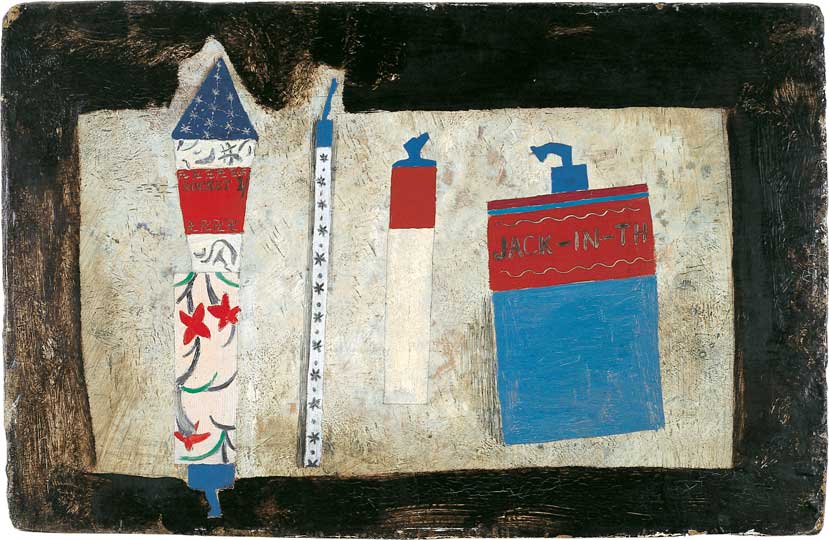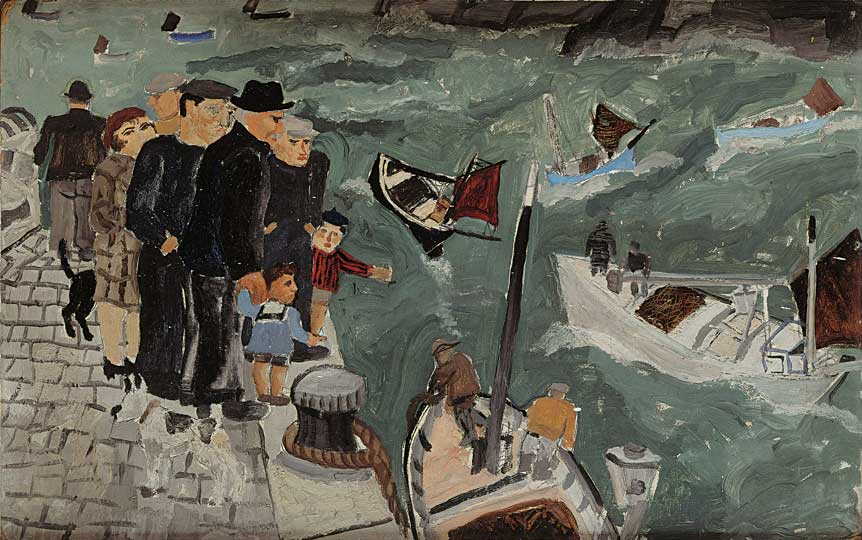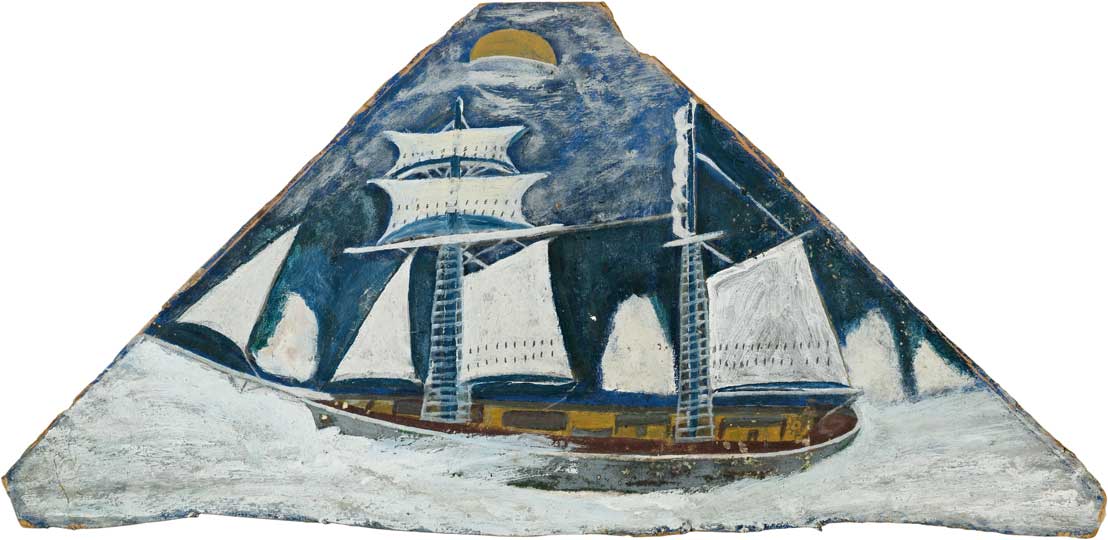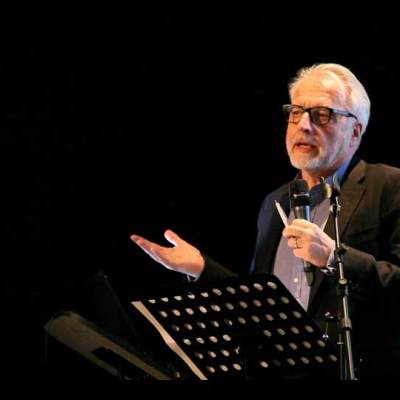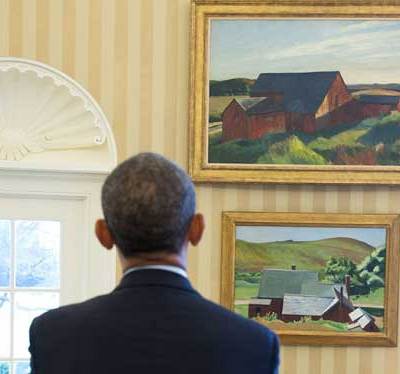‘We have cobalt green with our coffee for breakfast, lunch at 4, and rose madder for supper, and all our clothes smell of turpentine.’ So wrote Winifred Nicholson of her aesthetic alliance with Ben Nicholson in the early years of their marriage, painters travelling between Switzerland’s Lake Lugano, London, Cumberland and Cornwall. Later, after their divorce in 1938, when Ben Nicholson had left the family for the sculptor Barbara Hepworth, Winifred Nicholson wrote to Kettle’s Yard founder Jim Ede: ‘he knows and I know that our union is complete.’
‘Art & Life: 1920–1931’ at Kettle’s Yard in Cambridge, curated by the couple’s grandson Jovan Nicholson, is a way of teasing out that paradoxical notion of ‘completion’. The word suggests not only finality but also perfection, an idea embodied in the infinite completion of the circle – a form prevalent in the abstract works of both painters after their separation in the 1930s. Tellingly, it was Winifred who Ben Nicholson later credited as the source of inspiration for the circular forms cut into his iconic abstract reliefs.
Winifred was essentially a colourist who breathed life into her subjects, while Ben strove to extract the ‘significant realities’ of his subject matter through a concentration on form. However, the exhibition’s fluid and intelligent juxtapositions serve to blur such neat definitions. Instead of focusing on the grander narrative of the couple’s work within the wider context of international modernism – a subject addressed in the 2012 Tate St Ives exhibition ‘The Far and The Near: St Ives and International Art’ – this exhibition focuses on the earthy experimentation of the early years, characterised by the inspiration which ‘ran high, and flew backwards and forwards’ between the Nicholsons, the painter Christopher Wood, the potter William Staite Murray, and the fisherman artist of St Ives, Alfred Wallis.
The exhibition launched at Leeds Art Gallery in October, and will continue to Dulwich Picture Gallery in June. However, Kettle’s Yard is clearly its spiritual home. For Jim Ede, ‘the forming of Kettle’s Yard began […] by my meeting with Ben and Winifred Nicholson in 1924’, and several of the works on display formed part of the gallery’s inaugural exhibition in 1957.
Kettle’s Yard also holds the largest collection of paintings and drawings by Alfred Wallis. While Wood dramatised and mythologised life, and Murray sought to contain it within vessels of mesmeric harmony, Wallis’ paintings achieve their expressive power through a primitivism practiced without self-consciousness. It is often difficult to fully resolve the St Ives artists’ relationship with Wallis. Somehow it seems to echo the role of Trelawney in Byron and Shelley’s circle – a slice of authenticity in a game of make-believe, the shipping-in of a real-life Corsair.
However, this exhibition does justice to the genuine inspiration gleaned from Wallis’ work, with subtle visual combinations demonstrating the structural force developed in the work of Ben Nicholson, the new sense of movement achieved in Winifred Nicholson’s landscapes, and the expressive energy which emerged in Wood’s Cornish compositions. Nevertheless, Wallis seems to have been oddly immune to this climate of influence – stooping only to heed Ben Nicholson’s pleas that he refrain from fastening paintings to the walls with iron nails through their centre. Overall, Wallis and Murray appear as the most self-contained artists in the exhibition – a point beautifully presented by a glass cabinet aligning a Wallis-painted wooden box with one of Murray’s stoneware vessels.
‘Art & Life’ is a title that could be applied to any number of exhibitions. Yet, this is an exhibition so consumed by the question of reality as to hint towards a problematic system of value and affirmation. Reality becomes a gift granted to the few; the true artist experiences a world ready-sculpted for their eyes. On hearing of Wood’s suicide in 1930, Ben Nicholson wrote to Ede: ‘I could have parted with almost anyone but him […] The reality of his vision was amazing.’
Ultimately, this exhibition sees the Nicholsons celebrating their fellow artists’ clarity of vision, while struggling with the reality of their own lives. Indeed, the only section of the exhibition which suggests any curatorial clutter is the final room, ‘Diverging Paths’, where, among abstracts, still lifes, interior scenes and Murray’s pots, Wood’s last strange, semi-surrealist works are placed alongside Ben Nicholson’s turbulently mystical 1930 (Christmas Night). The painting’s dreamlike naivety seems a false approximation of the quality the artist so admired in Wallis – that of art ‘more real than life itself’. For Winifred, such an idea was abhorrent: ‘I want life and painting to be the same so that you cannot tell where one begins and the other ends. I plan and create all my pictures in living, and whilst I am living.’
As well as being an elegant survey of a group of important artists and their mutual influence, this exhibition amounts to a complex meditation on the nature of a life lived according to art; of how to express a world both of ‘classic eternity’, and fundamental fragmentation.
‘Art & Life 1920–1931: Ben Nicholson, Winifred Nicholson, Christopher Wood, Alfred Wallis & William Staite Murray’ is at Kettle’s Yard, Cambridge, until 11 May, and at Dulwich Picture Gallery from 4 June–21 September.


